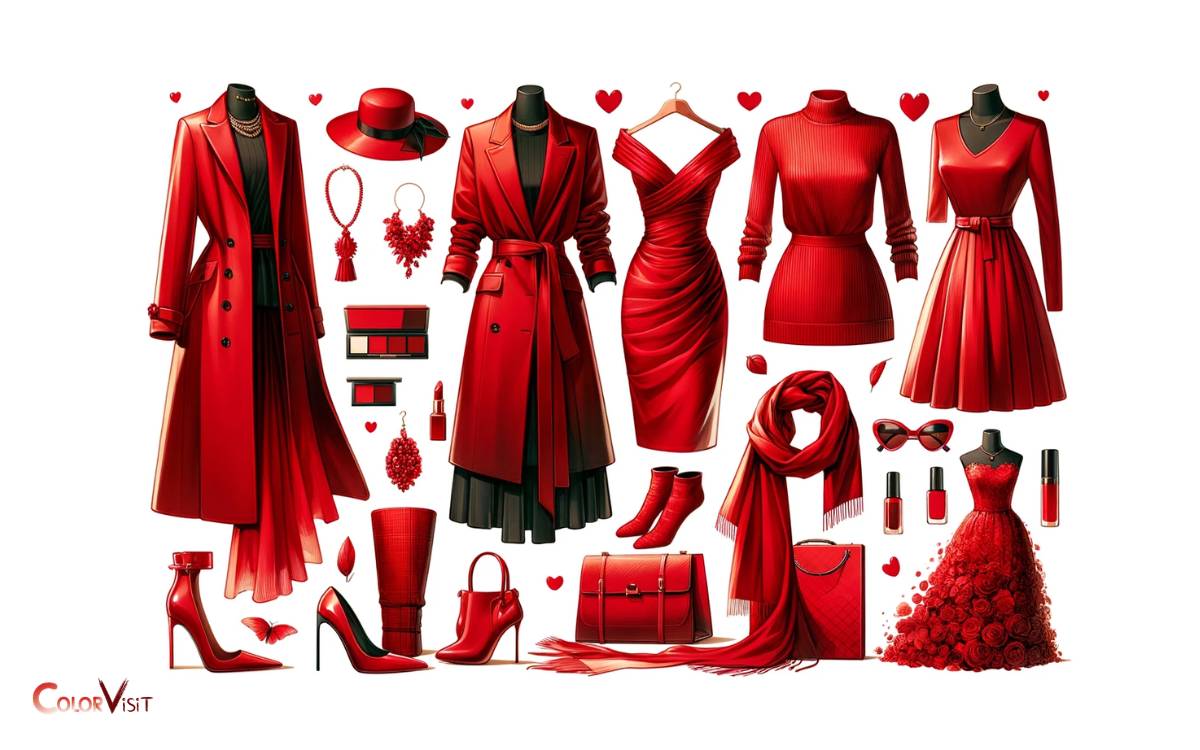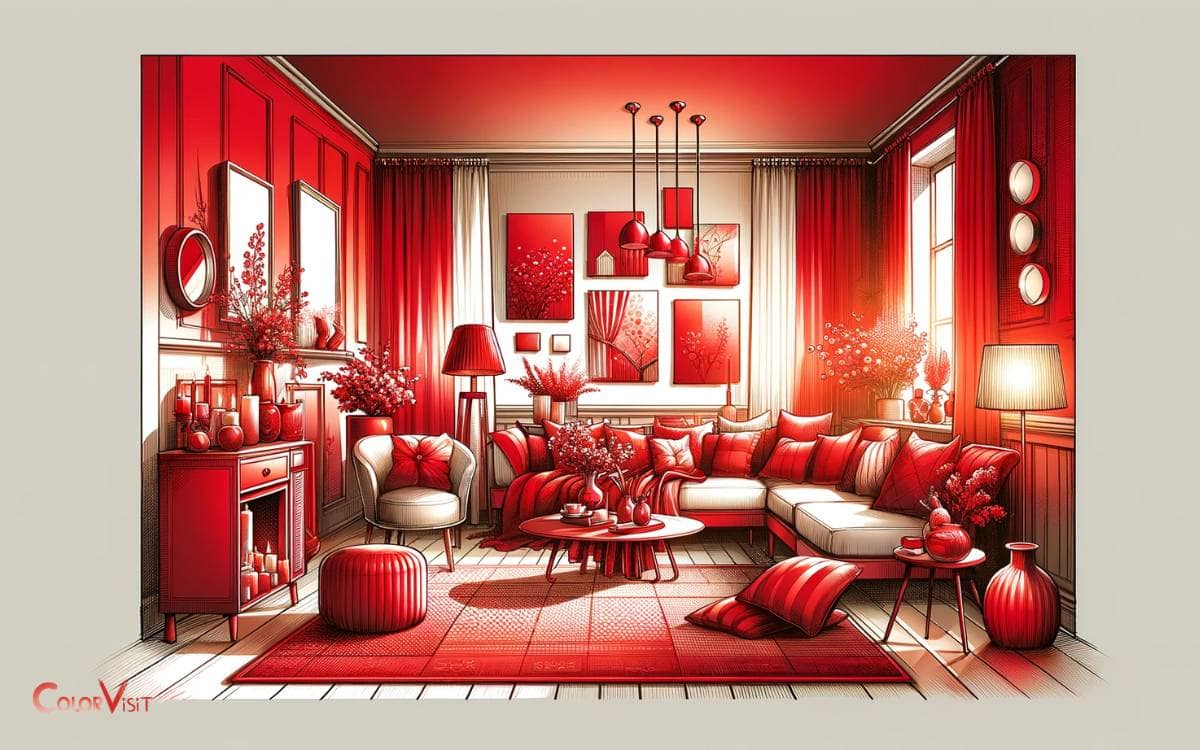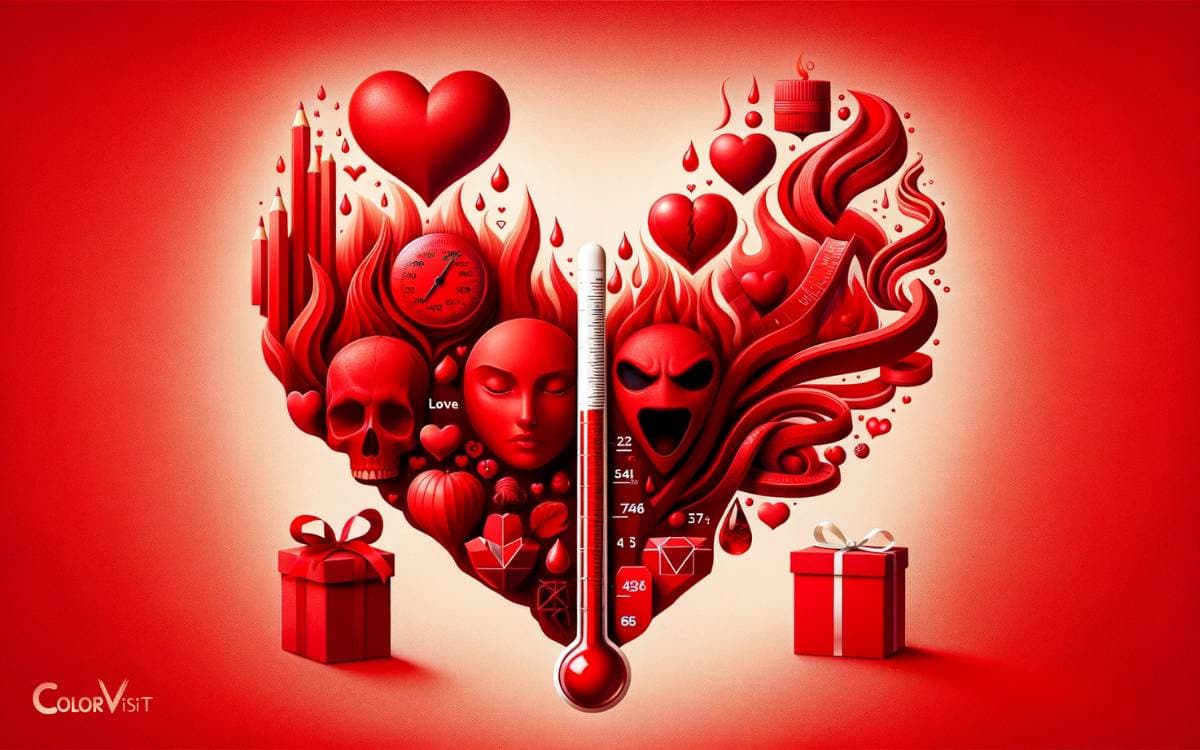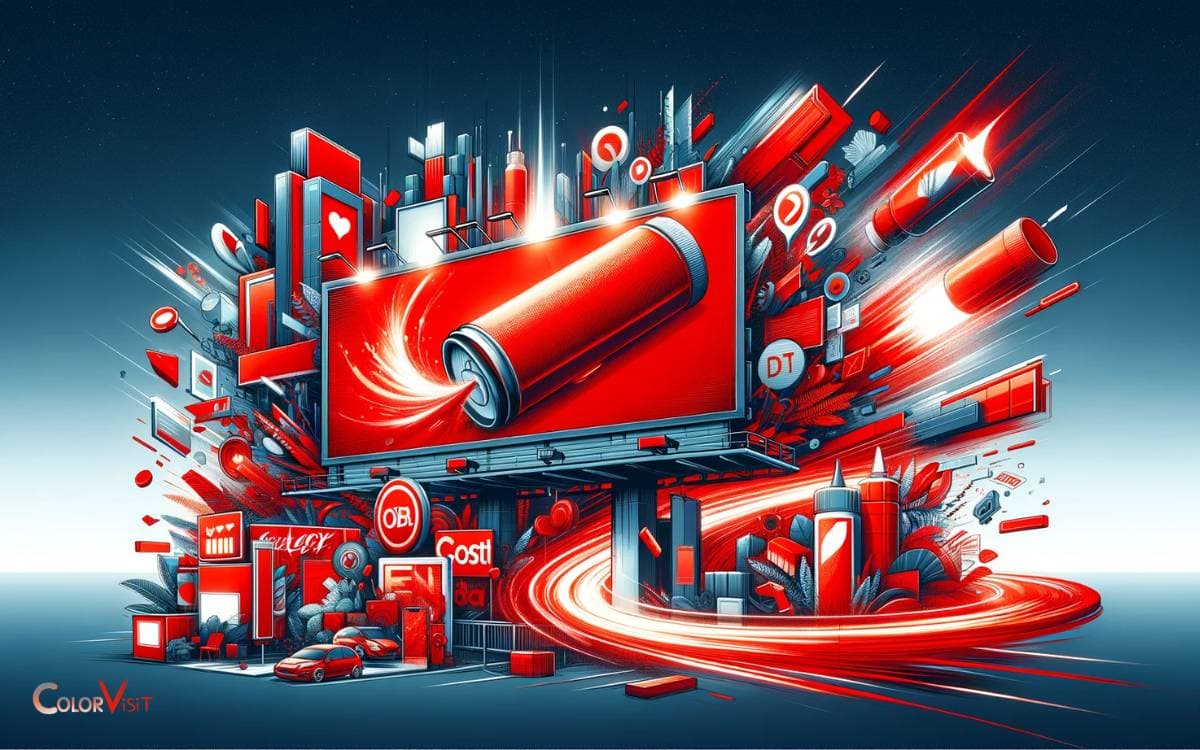How Many People Like the Color Red? 10%!
Numerous studies have been conducted to survey people’s preferences for colors, and red consistently ranks high on the list. Approximately 10% of people worldwide prefer the color red, making it one of the most liked colors.
Red is a very powerful color that is often associated with passion, love, and excitement. This can make it an attractive color for many people.
For example, in fashion, a red dress can be a bold statement piece that stands out in a crowd. In marketing, red is often used to grab attention and evoke strong emotions.
Red is a popular color choice due to its psychological and emotional impact. Its bold and captivating allure draws approximately 10% of people worldwide, demonstrating its significant influence.
Key Takeaway
The Psychology of Red
A significant percentage of individuals demonstrate a preference for the color red due to its psychological impact and associations.
- Red is known to evoke strong emotions, such as passion, power, and energy. It has been found to increase heart rate and create a sense of urgency, making it a popular choice for marketing and advertising.
- Furthermore, red has cultural and historical significance, symbolizing luck, prosperity, and love in various societies.
- Its ability to grab attention and create a lasting impression makes it a powerful tool in design and branding.
- Understanding color preferences, especially the psychological impact of red, allows for innovative approaches in product development, marketing strategies, and even interior design.
By leveraging the psychological effects of red, businesses and creators can effectively engage their audience and leave a memorable impact.
Cultural Significance
The color red holds significant cultural significance across diverse societies, reflecting various beliefs and traditions.
It has been deeply woven into the fabric of human culture and history, symbolizing a myriad of meanings and emotions.
Here are some of the cultural significances and historical significance associated with the color red:
- Luck and Prosperity: In many Asian cultures, red symbolizes good fortune and prosperity.
- Passion and Love: Across the world, red is commonly associated with passion, romance, and love.
- Power and Authority: Red has been historically linked to power and authority in various societies.
- Spirituality and Rituals: In some cultures, red is used in spiritual and ceremonial practices.
- Revolution and Change: Red has been a symbol of revolution and change in many historical movements.
These cultural symbolisms and historical significances have contributed to the enduring allure of the color red.
Red in Fashion
Red in fashion is a versatile and dynamic color that has been a perennial favorite among designers and fashion enthusiasts alike.
- Its bold and passionate nature makes it a powerful choice for creating impactful statements on the runway and in everyday wear.
- Red color symbolism has been deeply ingrained in various cultures, representing everything from love and courage to power and prosperity.
- In art, red has been utilized to evoke strong emotions and draw attention, making it a central element in many iconic fashion pieces.
- Designers often incorporate red into their collections to make a bold statement or add a pop of vibrancy to their designs.
- The use of red in fashion continues to evolve, offering innovative and creative opportunities for designers to experiment with this timeless and impactful color.
- This dynamic nature ensures that red remains a prominent fixture in the fashion world.
Red in Home Decor
The influence of red in home decor extends beyond fashion, with its ability to create vibrant and striking living spaces.
Red color symbolism and red interior design are powerful elements that can evoke various emotions and transform the ambiance of a room.
Consider the following innovative ways to incorporate red into home decor:
- Use red accent walls to create a focal point and add energy to the space.
- Integrate red furniture pieces or accessories for a bold and modern look.
- Incorporate red textiles such as curtains, rugs, and throw pillows to infuse warmth and coziness.
- Experiment with red lighting fixtures to create a dramatic and luxurious atmosphere.
- Showcase red artwork or decorative items to add depth and personality to the room.
Red in home decor not only adds visual interest but also stimulates emotions, making it a compelling choice for those seeking dynamic living spaces. Moving forward, let’s delve into the psychological impact of red in home environments.
Red and Emotions
Red is a color often associated with strong emotions. It is commonly linked to feelings of passion, energy, and excitement.
Understanding how red influences these emotions can provide valuable insights into its impact on human psychology and behavior.
Red and Passion
Emotions are deeply intertwined with the color red, evoking passion and intensity in individuals.
Red has long been associated with symbolism in art, representing love, desire, and strength. When contemplating the color red, one can’t help but feel a surge of emotion and energy.
Here are five ways red evokes passion:
- Red ignites a fiery passion, evoking feelings of love and desire.
- The color red symbolizes power and strength, evoking a sense of confidence and determination.
- It stimulates the senses, creating a feeling of excitement and intensity.
- Red brings forth a sense of urgency and importance, igniting motivation and drive.
- It exudes warmth and comfort, evoking feelings of security and reassurance.
The color red continues to innovate and inspire, leaving a profound impact on human emotions and experiences.
Red and Energy
Eliciting fervor and vitality, the color red incites a palpable energy that resonates deeply within individuals, making it a powerful influencer of emotions.
- Red is synonymous with vigor, ambition, and determination, evoking a sense of urgency and passion.
- It symbolizes action, often serving as a catalyst for change and forward momentum.
- The color red is known to increase heart rate and blood pressure, igniting a surge of adrenaline and stimulating the senses.
- This physical reaction mirrors the emotional impact of red, which is frequently associated with love, desire, and courage.
In marketing, red is strategically used to create a sense of urgency and excitement. It is a color that demands attention and commands a powerful presence, making it a potent force in shaping emotional responses and driving energetic engagement.
Red and Excitement
The color red elicits a palpable energy that resonates deeply within individuals, evoking a sense of urgency and passion, and this emotional response is experienced by a significant majority of people.
Red has a profound impact on human emotions and is rich in symbolism, representing various aspects of life and culture.
When considering red and excitement, it’s essential to recognize the following:
- Red ignites a feeling of intensity and exhilaration, stimulating a surge of adrenaline.
- It symbolizes power and courage, evoking a daring and adventurous spirit.
- The color red is often associated with love and desire, evoking romantic and passionate emotions.
- It can evoke a sense of danger and warning, triggering a heightened state of alertness.
- Red symbolizes vitality and strength, stirring feelings of determination and drive.
Red, with its emotional impact and deep symbolism, continues to captivate and inspire individuals seeking innovation and creativity.
Red in Marketing
When used strategically, the color red in marketing can evoke strong emotions and influence consumer behavior.
- Red is often utilized in branding to convey energy, passion, and excitement, making it a powerful tool for creating a memorable and impactful brand identity.
- Incorporating red in product packaging can attract attention and stimulate purchasing decisions, as it is known to create a sense of urgency and action.
- The boldness of red can communicate a brand’s confidence and assertiveness, appealing to consumers who seek innovative and dynamic products and experiences.
- Its ability to stand out amidst competition makes it a valuable asset in marketing campaigns.
Conclusion
The color red holds significant psychological, cultural, and emotional significance. It influences fashion, home decor, and marketing strategies. The survey results indicate a strong preference for the color red among many people.
Whether due to its association with power, passion, or danger, red continues to captivate and influence individuals across various aspects of life.







